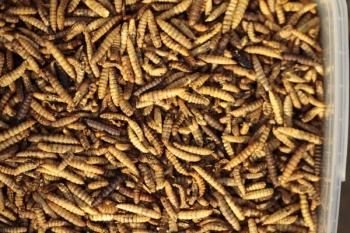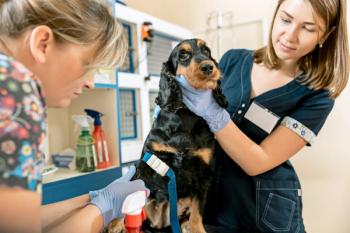
Keeping pace with Mrs. Dawdle, Saunter and Meander
My next appointment hadn't arrived yet. So, I had a little extra time on my hands when Mr. Azalea, the landscaper, came to get me.
My next appointment hadn't arrived yet. So, I had a little extra time on my hands when Mr. Azalea, the landscaper, came to get me.
Michael A. Obenski
"Somebody needs to talk to you out in the backyard, Doc," he said. "I had to stop mowing because they were right in my way. Anyway, they want to talk to you before they come in for their appointment." (It's never a dull moment.)
I headed out the side door of the clinic and started around back when I happened to glance at the parking lot. That's when I saw it—a 1960 Studebaker. That could only mean one thing. Mrs. Dawdle, the world's slowest veterinary client, was somewhere about. She was waiting for me when I got to the backyard.
"Doctor, come look at this," she said. "We came back here to relax for a minute and to look at your nice yard." (Heaven forbid she was on time for her appointment.)
"When we got back here, I saw these two beautiful caterpillars in your grass. It's a good thing I spotted them, because that man almost mowed right over them. What kind are they? You veterinarians probably know stuff like that, don't you?"
I had to admit that I did not know the genus and species of the caterpillars in question. Even though I can't recall the occurrences of each day in veterinary school, I'm pretty sure that I cut class on caterpillar identification day.
I picked up the caterpillars, put them on a nearby tree branch, and went back to work. When I left her, Mrs. Dawdle was sitting on her cat carrier gazing as some curious clouds. Fifteen minutes later, I called to her through the window and asked if she was ready to come in.
"Oh, of course, Doctor. We'll be right there," she said.
Then, she began to walk slowly toward the door while calling out, "Come on girls. It's time for your appointment."
Her cats, Saunter and Meander, were asleep in their carrier. Did she think they were going to follow her on their own? Did the carrier have holes in the bottom so that they could stick their feet out and move it like Fred Flintstone's car?
For the sake of my own sanity (it was too late for hers), I went out and got the carrier myself. That gave me the opportunity to examine the cats while waiting for Mrs. Dawdle to make it to the exam room. That took 12 minutes because she noticed that the pattern on one of the floor tiles in the hallway resembled Abraham Lincoln if she squinted and stood way off to one side.
When she did arrive, she had some advice for me.
"You know, Doctor," she said, "you always seem to be in a hurry. It would do you good to slow down. You know what they say, slow and steady wins the race."
I was going to tell her that fast and furious wins a lot more races, but decided that it would be better to just change the subject.
"I see you are still driving that classic Studebaker," I said. "The thing still looks like new. It's probably worth a lot of money now."
"Maybe, Doctor," she responded. "But I'd never sell it. It was my dad's car. It's old, but it still has all the pep I need."
"Have you ever gotten that car out of first gear?" I asked tongue in cheek.
"Oh sure Doc, you need to put it in second to really go fast."
Was she joking? Had she realized that I was only teasing her? I couldn't tell for sure. But later that day, when she left my office, I watched her drive down the road. Apparently, she had been dead serious. Her pace was such that two cats in a Fred Flintstone-type carrier could have beaten her home.
Dr. Obenski owns Allentown Clinic for Cats in Allentown, Pa.
Newsletter
From exam room tips to practice management insights, get trusted veterinary news delivered straight to your inbox—subscribe to dvm360.






